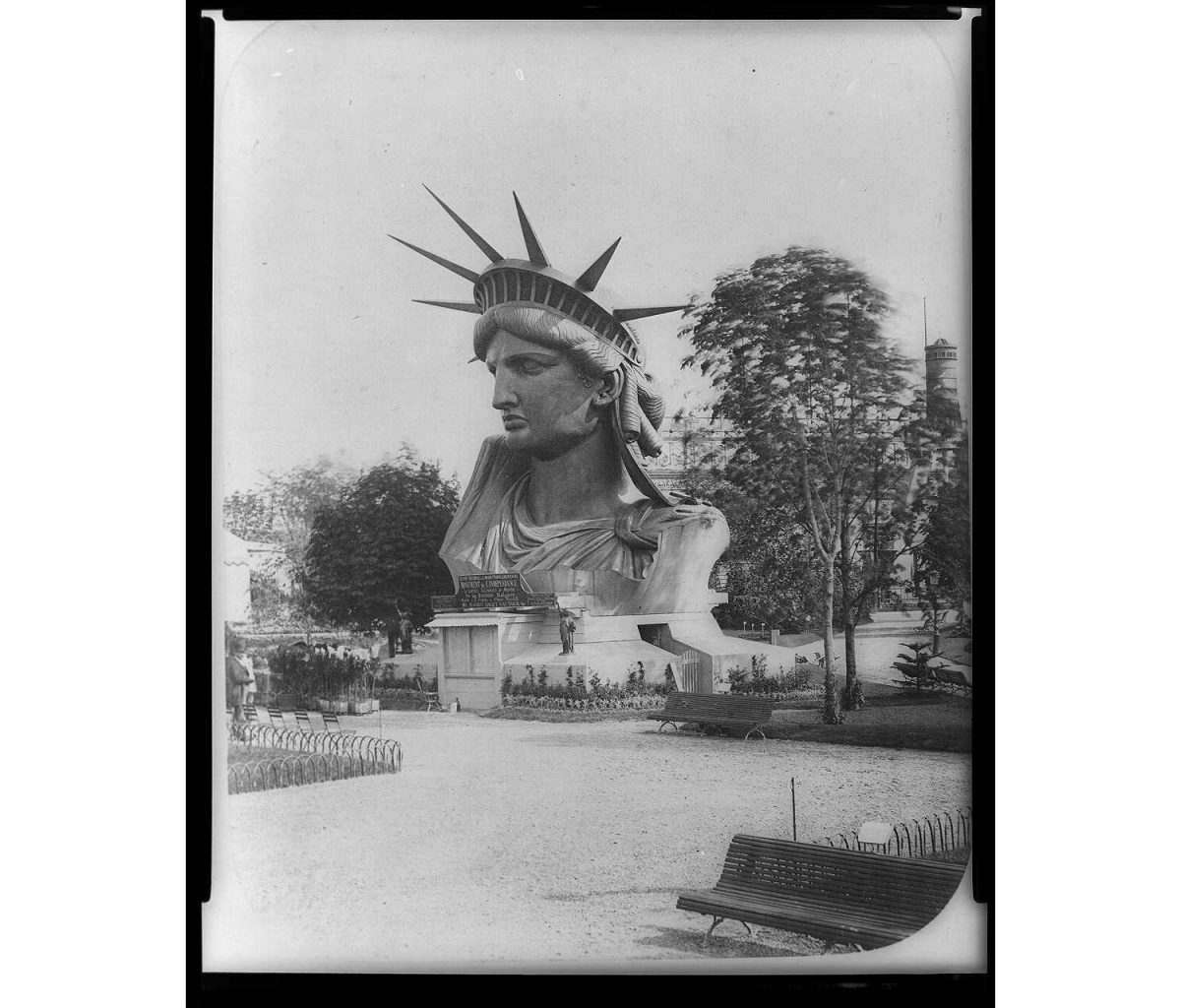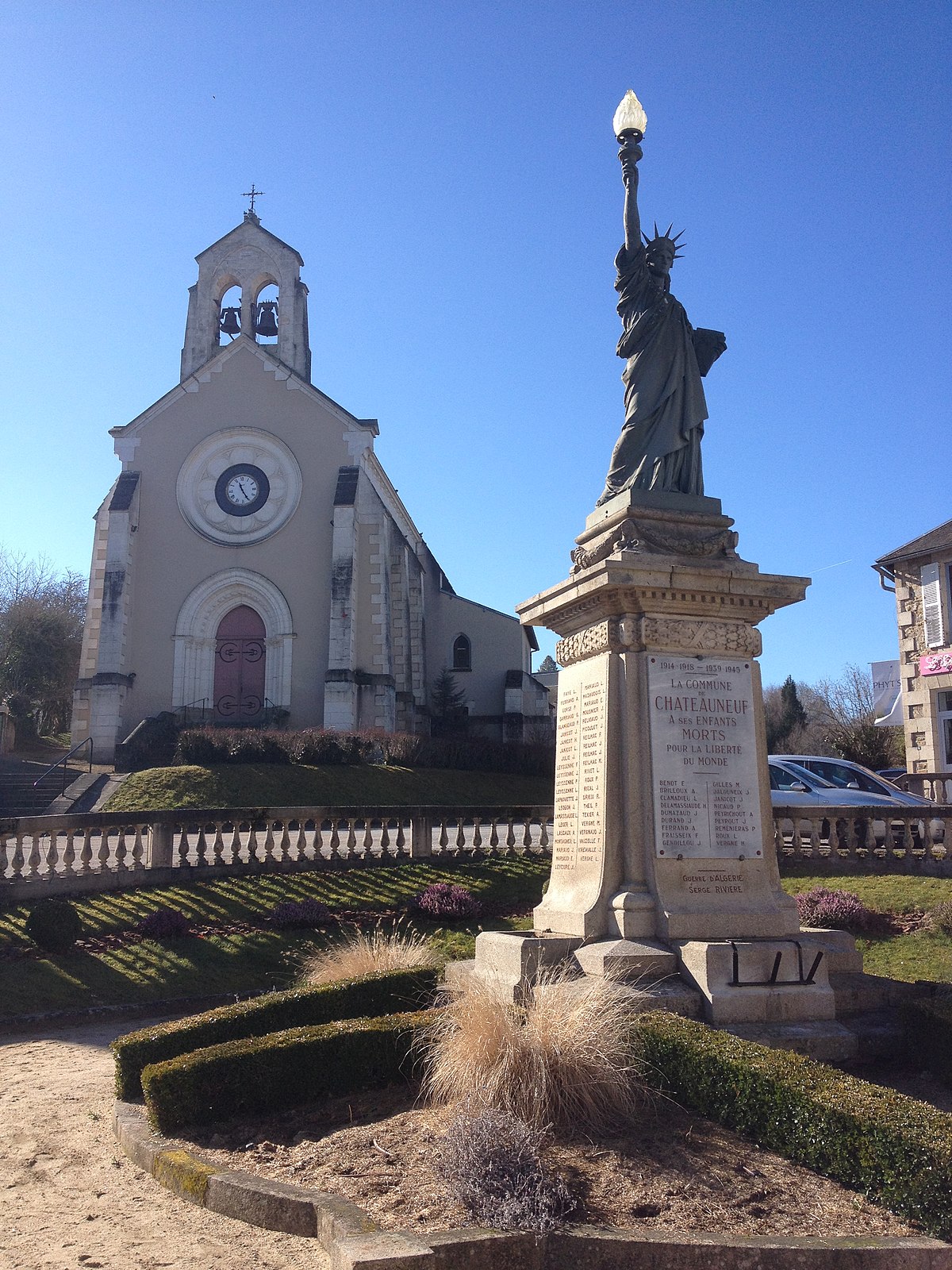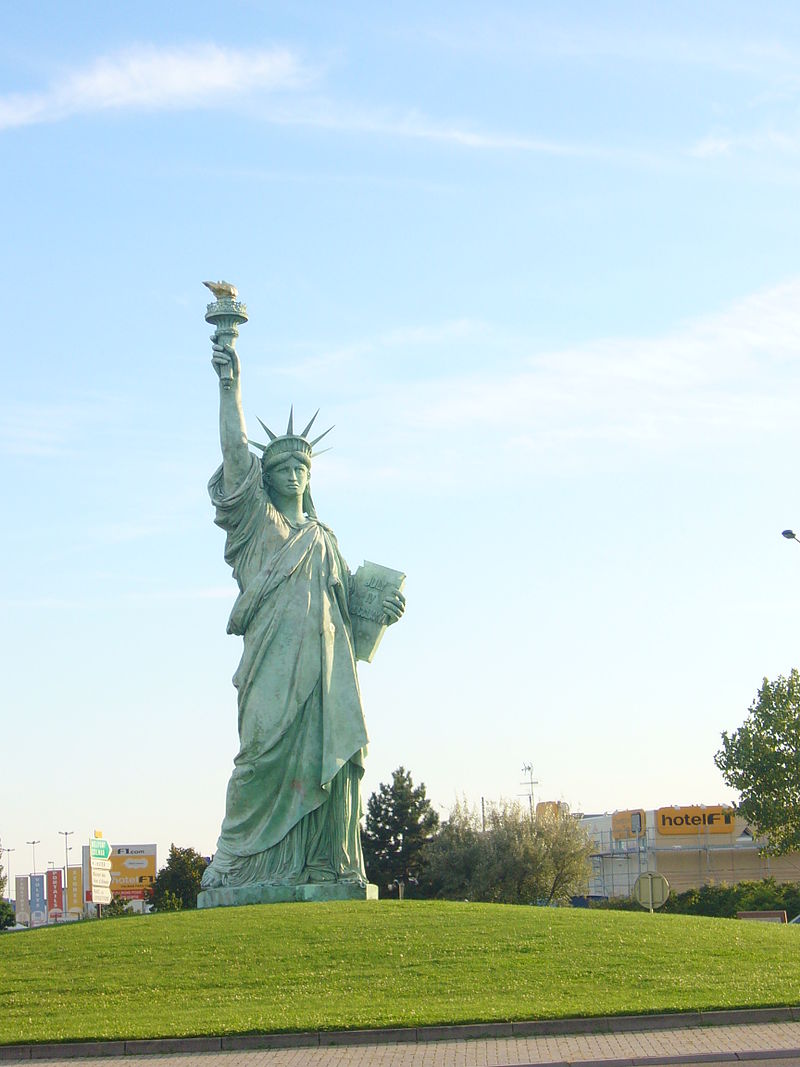The Statue of Liberty, whose full name is Liberty Enlightening the World, was one of the greatest gifts ever given. The original was given by the people of France to the United States in 1886 and was installed in New York’s harbor but did you know there are lots of Lady Libertys in France today? There are at least 25 in France and even more throughout the world.
In Paris alone there are quite a few. The one you need to know about is the one on the Allée des Cygnes which was a gift from the American community of Paris to Paris to commemorate the centennial of the French Revolution. On her tablet is the date July 14, 1789, as well as July 4, 1776. Then there’s the one in the Luxembourg Gardens, inside a private lobby on rue du Cirque, there is one on the roof of a peniche near the Eiffel Tower and one in the Musée d’Orsay. Yet another is very tiny and hard to see; it is incrusted in the torso of César’s Centaure (place Michel Debré Paris 6th) near his left shoulder.
And two at the museum of Arts et Métiers (National Museum of Technical Innovation) in Paris’ 3rd arrondissement where you can learn about the contruction of the New York harbor statue at a dedicated exhibit. The museum presents models and photos showing how the statue was enlarged from a small model to its monumental scale (the biggest metal statue in the world at the time!) and then built, using various techniques including plaster and wood to mold the copper cladding. The interior structure of this 46 meter monument was conceived by the engineer Gustave Eiffel to withstand the winds in the harbor. Eiffel applied his experience in constructing bridge pylons. The statue was actually built in a workshop in Paris’ ninth arrondissement then dismantled into 300 pieces for shipping to New York where it was attached to Eiffel’s structure using 300,000 rivets.

Fernique, Albert, 1841?-1898, photographer
The statue was financed by contributions from the French people and the stone pedestal, which nearly doubles the height of the monument, by American donations.
Liberty was sculpted by Frédéric Auguste Bartholdi, a French man who spent 21 years on this project starting with his (and Edouard de la Boulaye’s) idea which germed in 1865 to the inauguration in 1886. The model for Liberty’s face was Bartholdi’s own mother. The seven spikes of the crown represent the seven continents and seas. Each of her fingers is a tall as a person. On inauguration day it was hard to have the whole statue covered to then unveil it, so it was decided that just the face would be covered with a huge French flag. President Grover Cleveland was present, a holiday in New York was declared, parades were marched, and speeches were delivered. Then came the unveiling. Bartholdi climbed to the top of the statue and up into the arm and pulled the string. He was a bit in advance of his cue and the thunderous cheers interupted President Cleveland’s speech for a full fifteen minutes.

Un veiling Liberty drawn by Jada Rowland from the children’s book The Statue of Liberty which is available at FUSAC’s Bill & Rosa’s Book Room.
In honor of Liberty’s 134th birthday on the 28th of October (we were going to publish this in October 2020, but as you know things are out of whack) here’s a compilation of some of the other Statues of Liberty in France and how they came to be.

Statue of Liberty in Chateauneuf-la-Foret

Statue of Liberty in Colmar


